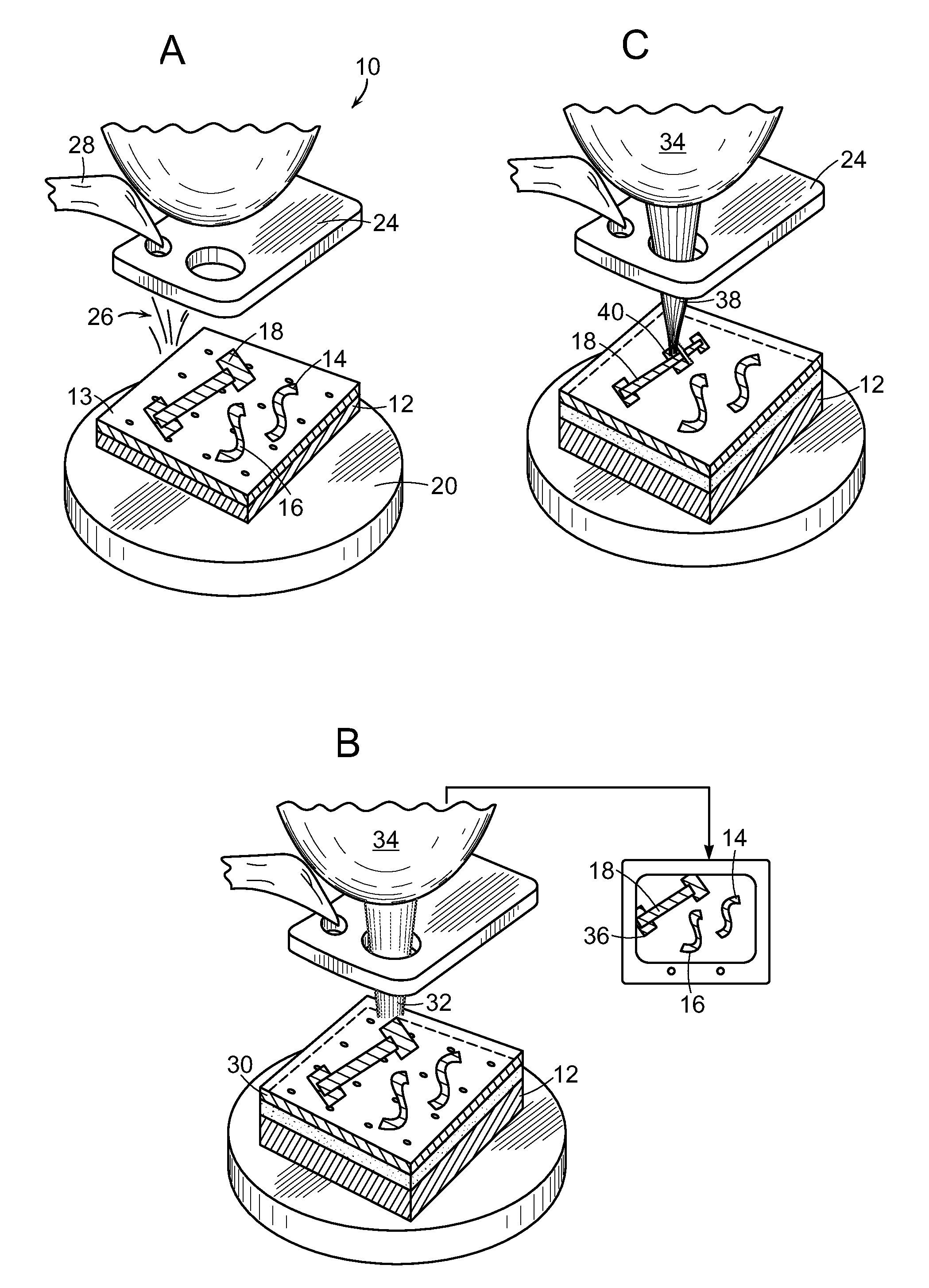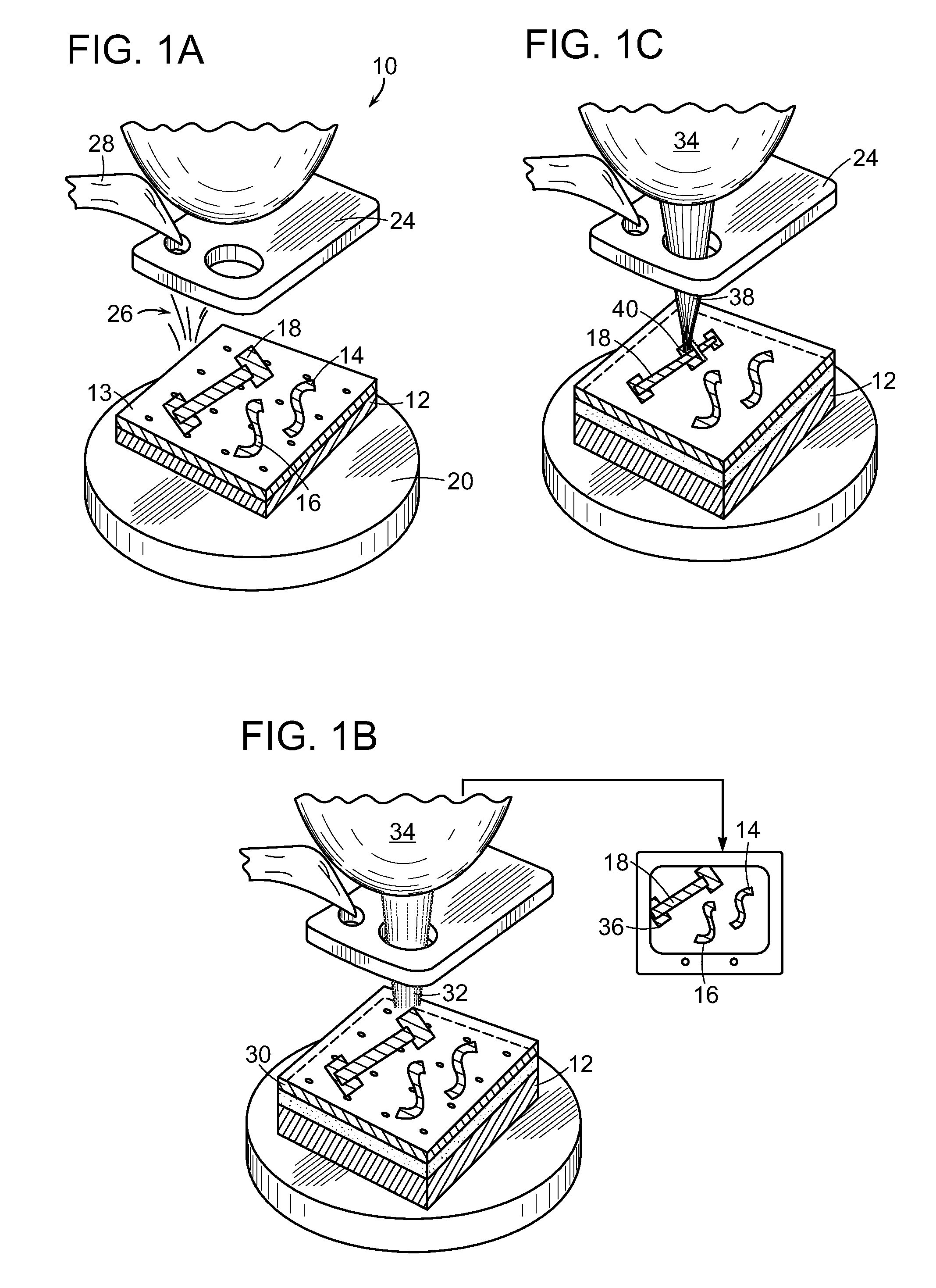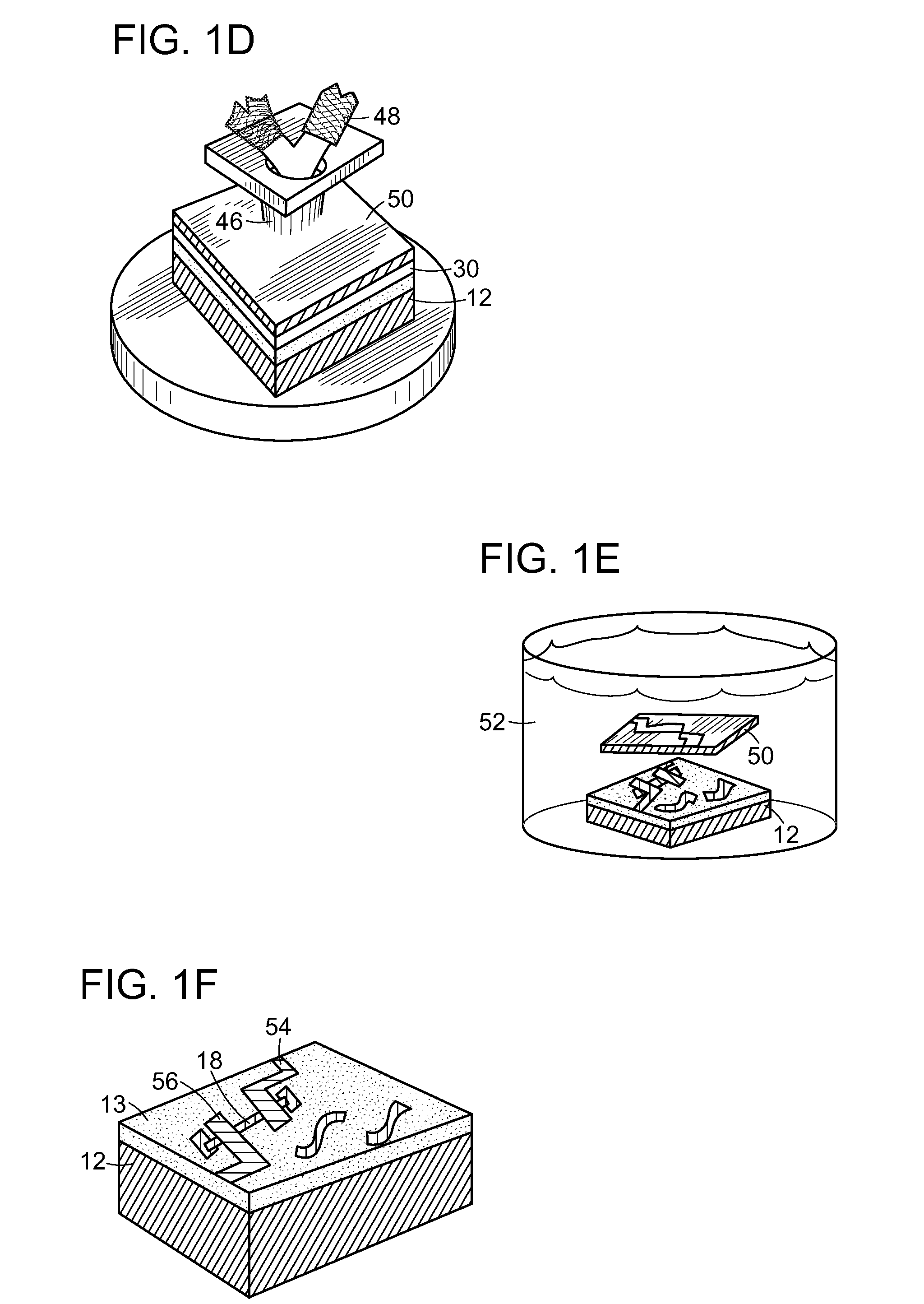Electron Beam Processing With Condensed Ice
- Summary
- Abstract
- Description
- Claims
- Application Information
AI Technical Summary
Benefits of technology
Problems solved by technology
Method used
Image
Examples
example i
EBIL Fabrication Sequence for SWCNT FET Production
[0057]Molybdenum contact pads were provided on a silicon substrate having a blanket coating of a 500 nm-thick SiO2 layer and a 60 nm-thick Si3N4 layer. The substrate was etched with KOH to form a trench and ion beam milling was employed to form a slit in the trench. Iron catalyst pads for synthesis of single wall carbon nanotubes (SWCNTs) were patterned to lay near the focused ion beam-milled slits such that the SWCNTs would grow across the slits. Standard E-beam lithography and lift-off was carried out to overlap the catalyst pads with the preformed Mo pads, which could be held at ground potential. This geometry produced ideal conditions for imaging the SWCNTs by transmission electron microscopy.
[0058]After SWCNT growth, the sample was loaded into the SEM of the EBIL cluster tool of FIG. 2 via a door on the metal deposition chamber that served as a load lock which could be isolated from the main chamber with a butterfly valve. The s...
example ii
EBIL Fabrication Sequence for Three-Dimensional Structures
[0070]Photoresist spinning works very well for flat substrates and chips that are generally larger than about 3 mm×3 mm. Photoresist spinning does not, however, uniformly cover micro-scale, 3-D micromachined structures, such as probes for scanning probe microscopy. Vapor-deposited ice provided in the EBIL process sequence can be employed to cover 3-D structures easily. For example, as shown schematically in FIG. 4, the EBIL process enables production of a metallic coil on an AFM cantilever.
[0071]In this process, the following steps are conducted: an ice layer is condensed on the cantilever, E-beam mapping of the cantilever determines the coordinates for patterning of the ice layer, the layer is patterned by the E-beam, metal is deposited over the ice layer and the cantilever, and the ice layer and metal are lifted off, resulting in the metal remaining on the cantilever only at the locations corresponding to the ice layer patt...
example iii
EBIL Patterning of and Metal Deposition on Carbon Nanotubes
[0077]For many sensing and analysis applications, it is commonly preferred to dispose a carbon nanotube, such as a SWCNT as a freely suspended structure across, e.g., an aperture or trench. Such freely suspended SWCNTs are incompatible with conventional spin-coated resists not only because they are non-planar, but also because they are very fragile. With the EBIL process herein, there was fabricated electrically insulating nanoparticles coaxially surrounding titanium on a freely-suspended SWCNT.
[0078]SWCNTs were synthesized across a 1-μm-wide aperture in a silicon nitride membrane. The nanotubes were then coated with ice in the EBIL vacuum chamber, as in FIG. 1A. The ice-covered nanotubes were then imaged in the SEM, as in FIG. 1B, at a low E-beam dose that did not remove a significant amount of ice. Then nominally 25-nm-wide ice-free regions were patterned across the ice-coated SWCNTs to remove the ice at pattern sites. In ...
PUM
| Property | Measurement | Unit |
|---|---|---|
| Temperature | aaaaa | aaaaa |
| Magnetic field | aaaaa | aaaaa |
| Pressure | aaaaa | aaaaa |
Abstract
Description
Claims
Application Information
 Login to View More
Login to View More - R&D
- Intellectual Property
- Life Sciences
- Materials
- Tech Scout
- Unparalleled Data Quality
- Higher Quality Content
- 60% Fewer Hallucinations
Browse by: Latest US Patents, China's latest patents, Technical Efficacy Thesaurus, Application Domain, Technology Topic, Popular Technical Reports.
© 2025 PatSnap. All rights reserved.Legal|Privacy policy|Modern Slavery Act Transparency Statement|Sitemap|About US| Contact US: help@patsnap.com



